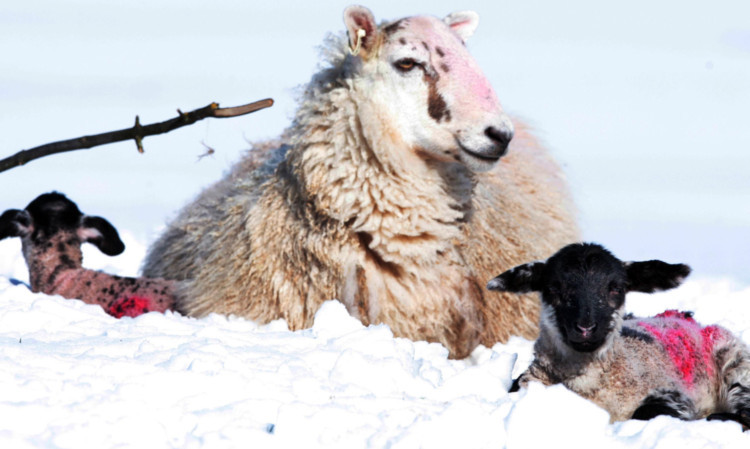As far as arable cropping is concerned the newly published results of the Scottish Government’s June agricultural census show huge variability compared with the previous year’s statistics.
However, this is hardly surprising considering the difficulty in establishing winter crops in the autumn of 2012.
Hopefully the situation is a “one-off”, but the same cannot be safely said about the decline in livestock numbers.
As the figures show, this is a worrying trend rather than a blip.
There were also concerns voiced over a 21,000-hectare drop in the area of tenanted land.
The move from winter-planted to spring-planted crops saw winter wheat down 14,000ha, offset by an increase of 7,000ha in spring barley and a very considerable 8,000 hectares in spring oats.
The areas planted with potatoes, oilseed rape and crops for feeding to livestock all saw decreases, with a small increase in the area of vegetables for human consumption.
The total number of cattle on Scotland’s farms declined by 2% to 1.8m.
The fall was all accounted for within the beef sector with the number of dairy cattle remaining virtually unchanged on 2012.
The total number of calves born fell by 4% to 531,132.
There was also a further fall in the number of sheep, down 2% to 6.57m.
This was chiefly due to a 167,000, or 5% decrease in the 2013 lamb crop, much of it related to the poor weather.
Pig numbers fell by an alarming 12% to 319,000, but at least some of this could be linked to the closure of the Vion plant at Broxburn and the consequent reduction in meat processing facilities.
Even so the decline is still seen as part of a long-running trend.
The poultry sector, often thought to benefit during recessionary times, still saw a 4% decline to 14.2m, though the statisticians see this as being within the normal range of fluctuation.
The amount of agricultural land rented again fell, this time by 21,000ha, or 2%, to 1.37m ha.
This means that 24% of agricultural land is rented compared to 30% in 2003.
There were an estimated 7,100 holdings with tenancy arrangements, down 370 or 5% since 2012.
Other figures released show that the area growing strawberries and blackcurrants increased but raspberries continued to decline.
There were 67,400 people employed on agricultural holdings, little changed over the last 10 years.
About 79% of the area of Scotland is classified as agricultural land.
On the drop in tenanted land, Scottish Tenant Farmers Association chairman Christopher Nicholson said: “It is ironic that whilst Scotland’s flagship food and drink export sector flourishes and demand for Scottish beef is at an all time high, agricultural production is dropping.
“The fall in livestock numbers over the past year is not unexpected, following the appalling weather conditions faced by many of our farmers, but the underlying trend is worrying, particularly in fragile areas.
“These figures demonstrate the need for continuing targeted direct support reinforced by coupled payments.
“Government figures echo the reality of a tenanted sector in decline as landlords withdraw land. STFA has been aware of an increasing number of tenancies being lost, but even the most pessimistic estimates come nowhere near the 21,000ha in the census.
“Unless positive action is taken to ensure tenanted land remains within the sector there will be fewer and fewer opportunities for new entrants, and the remaining rungs will vanish from the farming ladder.
“Despite claims to the contrary, there is spare agricultural capacity and opportunities in our hills and glens.”
